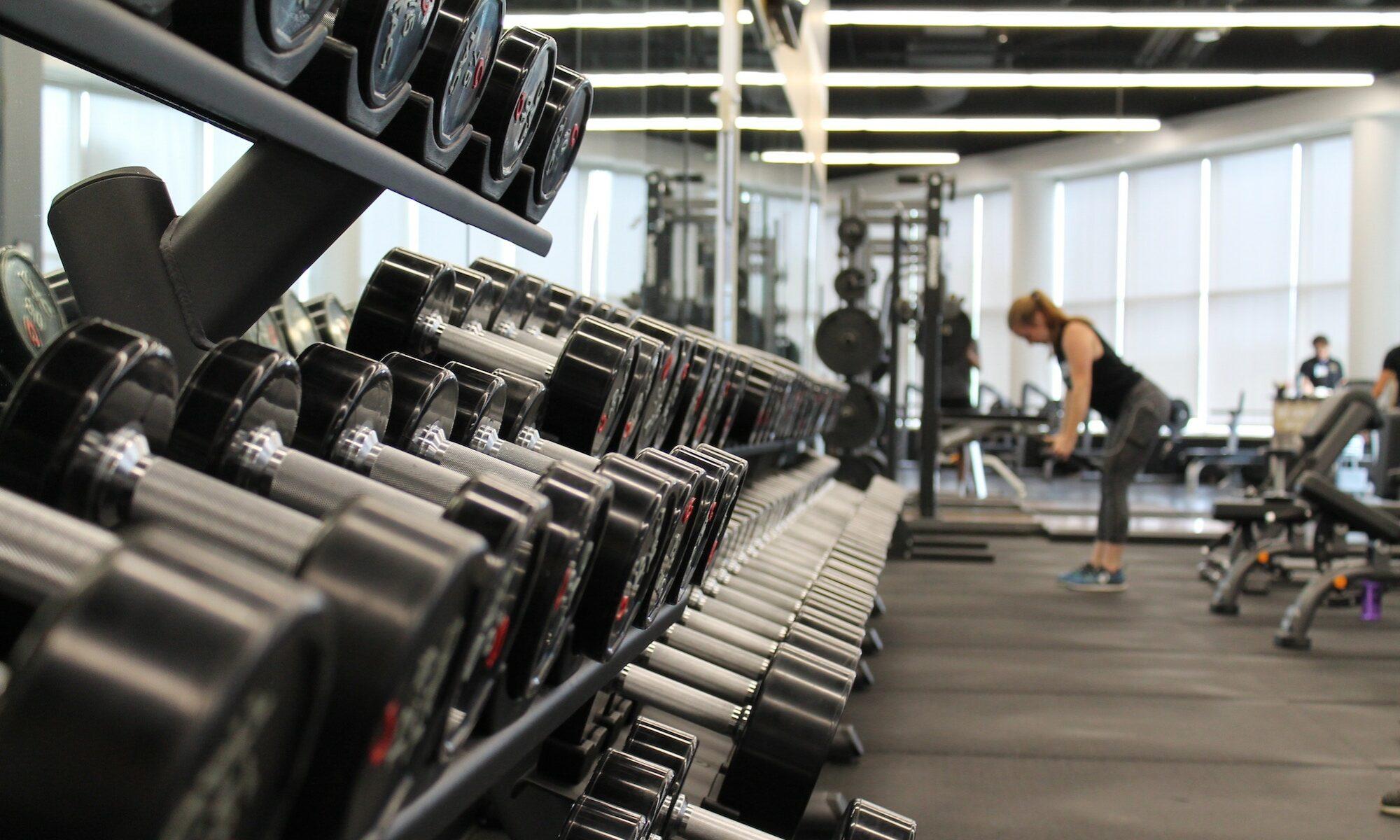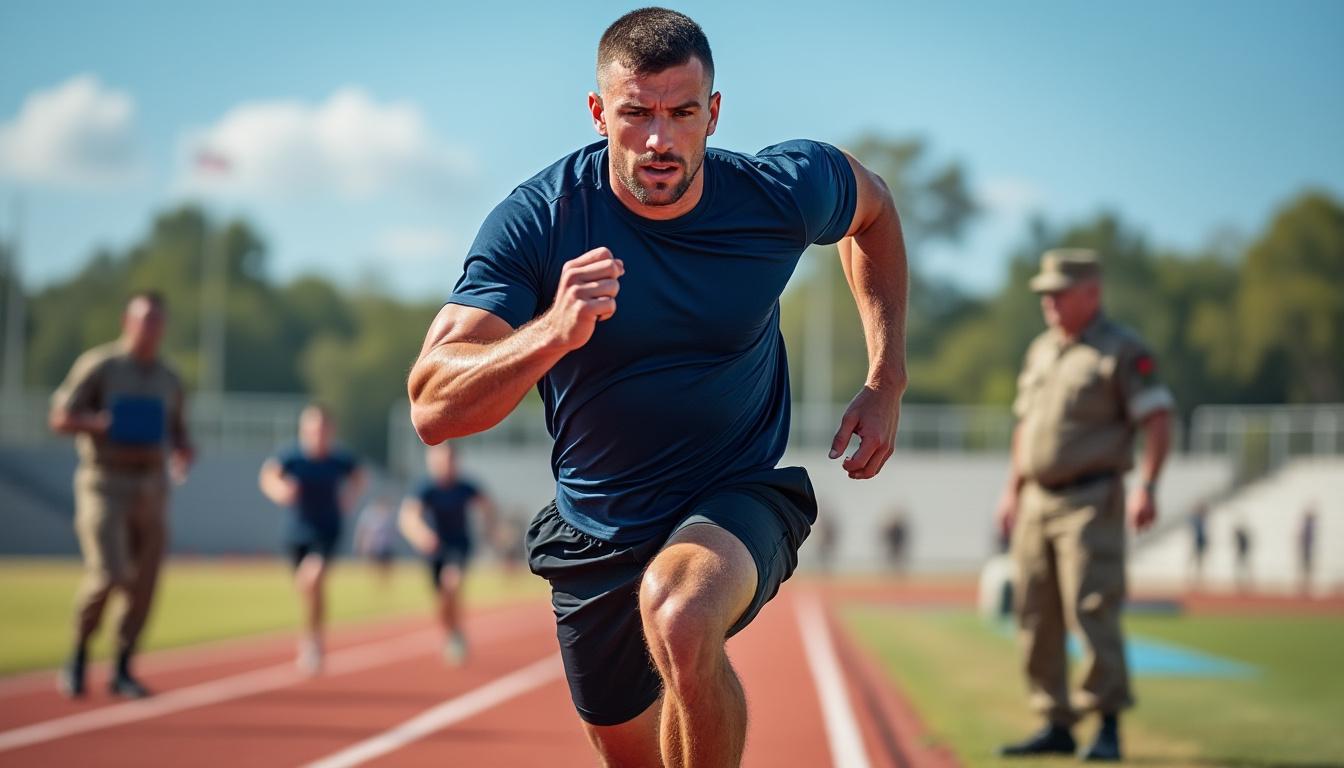The U.S. Army Fitness Competition embodies more than a test of strength and endurance—it’s a vivid portrayal of discipline, determination, and camaraderie. As the Army commemorates its 250th birthday in 2025, the competition has evolved into a platform showcasing the fitness prowess of Soldiers while pushing them beyond limits generally explored in daily training routines. This competition is not just a physical challenge; it’s a testament to the intense preparation, tactical teamwork, and mental toughness that form the backbone of elite military performance.
Behind the scenes of this rigorous event, one uncovers stories of grit and the strategic nuances that often go unnoticed. From specialized gear provided by renowned brands such as Nike, Adidas, and Under Armour to innovative fitness regimes incorporating the latest trends like vibration plates and tactical endurance workouts, this competition marks the convergence of tradition, technology, and top-tier athleticism.
Every Soldier stepping onto the course is backed by months of preparation, often utilizing equipment from names such as Reebok, New Balance, ASICS, Rogue Fitness, Brooks, Puma, and Trek, emphasizing the importance of quality gear in optimizing performance. This event also serves as a motivational beacon, inspiring viewers and participants alike to pursue their peak physical conditions with systematic, progressive training.
Such a prestigious competition offers invaluable insights for fitness enthusiasts and professionals aiming to understand the intricacies of military-grade physical training. It also prompts broader conversations about team dynamics, the psychology of competition, and the evolving standards of fitness in elite military units. As this coverage unfolds, expect a detailed exploration of the various facets that make the U.S. Army Fitness Competition a unique spectacle of perseverance and athletic excellence.
Core Physical Demands and Fitness Skills Tested in the U.S. Army Fitness Competition
At the heart of the U.S. Army Fitness Competition lies a wide array of physical challenges designed to rigorously assess Soldier readiness and capability. Unlike many commercial fitness events, this competition prioritizes functional strength, endurance, agility, and tactical skills that have real combat applications. Understanding these demands reveals the exceptional scope and depth of military fitness today.
Endurance and Tactical Cardiovascular Conditioning
Endurance is fundamental throughout the event, often involving obstacle courses that require continuous movement combined with high-intensity bursts. Participants must maintain peak cardiovascular output for prolonged periods, transitioning fluidly between sprints, climbing, crawling, and carrying weighted objects. This mimics the physical realities Soldiers face on the battlefield.
Specialized training regimens incorporate cross-discipline elements such as trail running on rugged terrain equipped in top footwear brands like Brooks and ASICS, emphasizing stability, shock absorption, and durability. Such shoes reduce injury risk while enhancing mobility during long-distance or multi-terrain runs.
Functional Strength and Power
Functional strength is assessed through lifting, dragging, and pushing heavily weighted objects simulating the moving of injured comrades or hauling gear under duress. Training for this event often involves equipment from Rogue Fitness, widely respected for robust, versatile strength training apparatuses aligned with tactical conditioning protocols.
Developments in strength training target explosive power, ensuring Soldiers can generate maximal force quickly. This is vital for overcoming obstacles such as cargo nets, walls, and ropes. Brands like Nike and Under Armour often supply compression and performance wear designed to support muscle engagement during explosive movements.
Agility, Balance, and Coordination
The competition tests agility with sequences demanding rapid changes of direction, balance on narrow beams, and precise coordination under fatigue. Such challenges reflect the unpredictable environments Soldiers navigate in combat scenarios. Participants often train on vibration plates, outlined in expert sources like this fitness resource, which enhance neuromuscular control, balance, and proprioception.
Mental Toughness and Teamwork
Physical challenges are intertwined with tasks demanding acute mental focus and collaboration. Team events require synchronization, communication, and strategic planning, emphasizing that no Soldier triumphs alone. The grueling nature of the competition pushes participants beyond mere physical limits, testing resilience and adaptability.
Essential Fitness Skills in Detail
- Endurance running: Covers long distances over varied terrain to develop cardiovascular stamina.
- Load carrying: Training with weighted packs, often incorporating Elite Luxury fitness concepts for recovery phases as detailed here.
- Obstacle efficiency: Mastery over climbing, crawling, balancing, and vaulting obstacles rapidly and safely.
- Functional lifting: Incorporating compound, explosive movements to mimic battlefield lifting requirements.
- Recovery and injury prevention: Use of brands like New Balance and Puma for supportive footwear and recovery gear.
| Fitness Component | Military Application | Training Focus | Gear Recommendations |
|---|---|---|---|
| Endurance | Prolonged marches, pursuit, evasion | Cardiovascular conditioning, trail running | Brooks, ASICS Trail Shoes |
| Strength and Power | Injury evacuation, equipment transport | Functional lifting, explosive training | Rogue Fitness Equipment, Nike Performance Wear |
| Agility and Balance | Terrain navigation, obstacle overcoming | Balance drills, neuromuscular training | Under Armour, Vibration Plates |
| Teamwork | Combat unit cohesion | Communication and synchronized tasks | N/A (emphasis on training environment) |
This extensive scope of fitness parameters ensures that competitions like these remain unmatched in challenging the body and mind comprehensively. Participation in such events offers inspiration not only for Soldiers but also for civilians seeking scalable fitness protocols.
Preparation and Training Strategies Behind U.S. Army Fitness Competition Success
Success in the U.S. Army Fitness Competition isn’t accidental. It emerges from meticulous preparation, blending scientific training principles, nutrition, equipment, and psychological readiness. Exploring these strategies sheds light on why competitors not only survive but thrive amidst this intense challenge.
Structured Periodization and Progressive Overload
Trainers implement periodization models dividing the preparation into phases focusing on endurance, strength, speed, and recovery. Progressive overload ensures incremental stress to muscles and cardiovascular systems, prompting continuous adaptation. This rigorous scheduling keeps athletes in optimal shape while mitigating overtraining risks.
The influence of brands like Reebok can be seen in specialized cross-training shoes that support high-impact workouts while facilitating recovery days. Similarly, New Balance shoes are often incorporated for low-impact endurance runs.
Multi-Faceted Training Modalities
Beyond traditional weightlifting and running, competitors engage in high-intensity interval training (HIIT), plyometrics, and functional circuit training incorporating tactical scenarios. Integration of tools such as kettlebells, inspired by modern training studios like KettleBox Fitness Studio, enhances explosive power and core endurance.
Understanding the tactical relevance of each drill directs focused efforts, ensuring training aligns with real-world operational requirements rather than generic fitness metrics.
Nutrition and Recovery Protocols
Nutrition is tailored to support the metabolic demands of intense training phases, focusing on macronutrient balance, micronutrient sufficiency, and hydration. Innovative recovery practices include the use of vibration plates and compression gear from Puma and Under Armour, aiding muscle regeneration and reducing injury duration.
Collaboration with nutritionists and sports scientists ensures that the team adopts evidence-backed diets and supplementation, a critical advantage in sustaining peak performance across competitions.
Mental Conditioning and Team Synchronization
Mental toughness training involves visualization, stress inoculation, and team-building exercises to bolster resilience through adversity. Participants engage in role-playing and situational drills to enhance cognitive flexibility and leadership skills, which are crucial when physical fatigue sets in.
Team synchronization drills cultivate communication flow and situational awareness, indispensable for coordinated action in time-sensitive events.
- Periodization model phases: endurance base, strength & power, peak conditioning, taper and recovery.
- Functional circuit exercises: agility ladders, sandbag carries, rope climbs.
- Recovery aids: vibration therapy, compression garments, active stretching.
- Nutrition essentials: complex carbohydrates, lean protein, electrolytes.
- Mental drills: visualization, scenario-based teamwork.
| Training Element | Purpose | Tools & Equipment | Brand Associations |
|---|---|---|---|
| Periodization | Structured adaptation & injury prevention | Training plans, monitoring apps | Reebok, New Balance (footwear) |
| Functional Circuits | Agility & multi-system conditioning | Kettlebells, ropes, sandbags | Rogue Fitness, KettleBox Fitness Studio inspiration |
| Nutrition | Energy supply & recovery optimization | Custom meal plans, supplements | Under Armour recovery gear, Puma compression wear |
| Mental Training | Focus & teamwork under pressure | Psychological training tools, team scenarios | N/A |
This holistic preparation approach propels Soldiers to perform remarkably at events, embodying tactical fitness that transcends the ordinary. Civilian fitness enthusiasts can adopt many principles, tailoring them according to personal goals and capabilities.
Socio-Cultural Impact of the U.S. Army Fitness Competition and Its Role in Modern Military Training
The U.S. Army Fitness Competition serves a purpose far beyond physical assessment; it represents a pivotal cultural moment that elevates military fitness visibility and influences broader societal perceptions. Understanding this impact reveals how military fitness competitions are reshaping ideas around discipline, teamwork, and physical preparedness on multiple levels.
Promoting Physical Fitness as a Core Military Value
This competition reinforces fitness as a non-negotiable military standard, motivating Soldiers at every rank to elevate personal fitness levels. The competitive environment encourages friendly rivalry which fosters enhanced unit cohesion and morale. Visibility of these events, often broadcast and shared via social platforms, underscores the pride embedded in physical excellence and operational readiness.
Legendary brands such as Nike and Adidas often feature in athlete endorsements and team kits, linking military fitness culture with mainstream sports branding, creating aspirational identities for both Soldiers and civilians.
Public Engagement and Recruitment Advantages
The event strategically assists recruitment efforts by highlighting the Army’s emphasis on physical prowess and the lifestyle associated with it. Younger populations frequently connect with this narrative, drawn to challenges that promise personal transformation and an all-encompassing fitness journey. Army-sponsored fitness teams now compete in major events like the Arnold Sports Festival, showcasing Soldier skills and professionalism.
Platforms like Fitness Warrior Nation have chronicled these efforts, highlighting how elite teams combine physical and mental rigor—an inspiring story for prospective recruits and fitness aficionados alike.
Influence on Civilian Fitness Trends and Gear Industry
The intensity and variety of competition activities inspire new fitness trends among civilians. There is a tangible influence on the adoption of military-style workouts, functional training, and obstacle course races. This mirrors the widespread popularity of brands like Reebok and Under Armour, whose gear caters both to Soldiers and fitness enthusiasts, merging tactical function with style and comfort.
Moreover, civilian gyms have introduced programs inspired by military fitness, incorporating advanced equipment from Rogue Fitness and vibration plate technologies previously reserved for Soldier elite preparation. This crossover fosters community fitness while reinforcing the importance of discipline and resilience.
- Military fitness awareness: Elevates all-rank physical standards.
- Recruitment engagement: Attracts youth with meaningful challenge narratives.
- Civilian fitness innovation: Adoption of military-inspired workouts and gear.
- Brand cooperation: Collaborative promotion of fitness and gear quality.
- Community fitness expansion: Integration of tactical fitness in gyms nationwide.
| Impact Category | Effect | Examples | Associated Brands |
|---|---|---|---|
| Military Culture | Enhanced pride and cohesion | Team uniforms, training camps | Nike, Adidas |
| Recruitment | Increased enlistment interest | Public events, fitness challenges | Reebok, Under Armour |
| Civilian Fitness Trends | Expanded fitness program variety | Obstacle races, functional fitness classes | Rogue Fitness, Puma |
| Gear Industry | Innovations in performance wear | Sport-utility apparel lines | New Balance, ASICS |
As these influences expand, the U.S. Army Fitness Competition continues to serve as a crucial touchstone for evolving fitness standards and cross-cultural fitness engagement.
Gear and Apparel Selection: The Intersection of Performance and Technology in the U.S. Army Fitness Competition
In the modern military fitness landscape, gear and apparel choices can dramatically impact performance outcomes. The U.S. Army fitness challengers rely heavily on the intersection of technology and design to gain every possible advantage throughout demanding events.
Footwear Technology and Tactical Adaptation
Footwear embodies one of the most critical components of competition gear. Athletes favor brands such as Nike, Adidas, New Balance, ASICS, and Brooks due to their specialized designs targeting stability, comfort, traction, and injury prevention. Shoes must cater to brutal terrains — rugged trails, slippery obstacles, and quick directional shifts — demanding durability as a top priority.
Innovations include carbon-infused midsoles, antimicrobial linings, and adaptive traction systems, contributing to enhanced Soldier endurance and foot health. Footwear technology also integrates lightweight compositions to prevent fatigue over extended wear periods.
Apparel Innovation and Functional Comfort
These competitors benefit from apparel that manages moisture, supports muscles, and adapts to weather conditions. Leading companies like Under Armour, Reebok, and Puma provide compression wear and breathable fabrics that regulate temperature and reduce chafing. Integration of smart textiles embedded with sensors monitoring biometrics is becoming increasingly common, feeding data that optimize individual performance.
Accessory and Equipment Enhancements
Beyond shoes and clothes, Soldiers leverage advanced tactical gear like wrist GPS systems, hydration packs, and compression sleeves. The synergy between gear and training maximizes recovery and endurance. Brands like Rogue Fitness supply resistance bands, weighted vests, and other tools for on-the-go muscle activation and conditioning.
- Footwear features: Stability soles, lightweight, moisture-wicking
- Apparel advantages: Compression support, temperature regulation
- Technological integration: Biometrics sensors, real-time feedback
- Accessory utility: Hydration packs, GPS, wearable tech
- Recovery tools: Resistance bands, vibration therapy devices
| Gear Type | Function | Key Features | Popular Brands |
|---|---|---|---|
| Footwear | Comfort and terrain adaptation | Shock absorption, traction, durability | Nike, Adidas, Brooks, ASICS, New Balance |
| Apparel | Muscle support and moisture management | Compression, breathability, temperature control | Under Armour, Reebok, Puma |
| Accessories | Performance monitoring and endurance | GPS, hydration systems, smart sensors | Rogue Fitness |
| Recovery Devices | Muscle relaxation and injury prevention | Vibration plates, compression tools | Puma, Under Armour |
Understanding and optimizing gear selection enables participants to reach peak potential in demanding scenarios. These equipment choices, combined with focused training, define the modern standards in military fitness competitions.
Insights into Teamwork Dynamics and Psychological Resilience in U.S. Army Fitness Competition
Team-based challenges are essential components of the U.S. Army Fitness Competition, emphasizing that physical prowess alone doesn’t guarantee success. Instead, excellence in collaboration, communication, and psychological resilience plays a defining role.
Communication Under Duress and Strategic Collaboration
Effective communication is vital when teams navigate complex obstacle courses or synchronize during timed challenges. Soldiers train intensively to develop shorthand cues and signals ensuring fluid coordination. This precision reduces errors, conserves energy, and enables rapid responses to shifting circumstances.
Team leaders must maintain group focus and moderate stress levels, employing motivational techniques and clear task delegation to fortify collective output.
Building Psychological Endurance Through Competition Pressure
The competition’s endurance component stretches mental stamina as much as physical. Participants confront fatigue, discomfort, and uncertainty, demanding constant mental recalibration. Exercises like stress inoculation training simulate combat-like pressures to prepare Soldiers for high-stakes environments.
Such techniques have crossovers with civilian mental health and performance coaching, proving beneficial beyond military contexts, as seen in communities covered by outlets like Fitness Warrior Nation’s mental resilience features.
Team-Building Exercises Enhancing Cohesion and Morale
Group exercises extend beyond physical drills into trust-building and conflict resolution. Activities designed to foster shared objectives and strengthen interpersonal bonds are embedded throughout the training cycle. These dynamics often shift the competition’s atmosphere from individual qualification to a collective pursuit of excellence.
- Communication techniques: Non-verbal cues, active listening
- Mental endurance training: Stress inoculation, visualization
- Team cohesion activities: Trust falls, group problem-solving
- Leadership development: Delegation, motivation under pressure
- Morale boosters: Celebrating milestones, peer recognition
| Psychological Aspect | Purpose | Training Method | Outcome |
|---|---|---|---|
| Communication | Coordination and error reduction | Practice drills, shorthand signals | Improved team efficiency |
| Mental Endurance | Resilience under fatigue | Stress scenarios, visualization | Enhanced focus and adaptability |
| Team Cohesion | Trust and morale building | Trust exercises, group challenges | Stronger unit confidence |
| Leadership | Effective group management | Role assignments, motivational talks | Aligned team effort |
These mental and social components amplify the physical demands of the competition, creating well-rounded Soldier-athletes capable of overcoming the multifaceted obstacles they face. Such preparation also influences broader military and civilian fitness fields by underscoring the necessity of mind-body integration.


